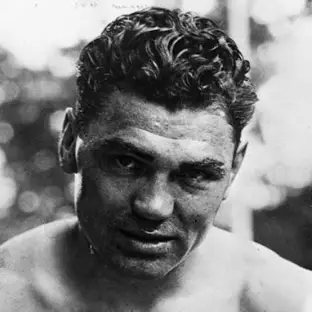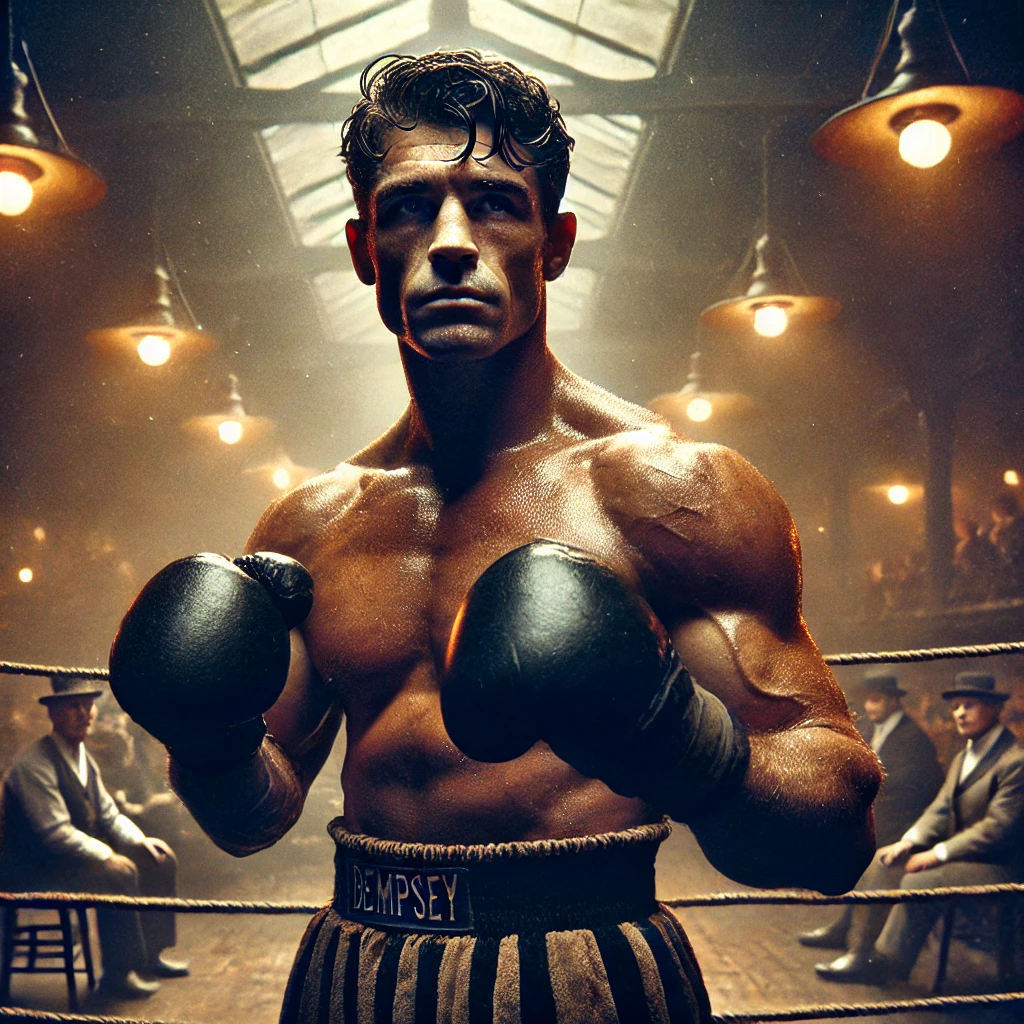

There’s something about Irish blood that makes men fight. Not for the love of violence, but for the primal necessity of survival. The Famine, the forced migrations, the streets of Brooklyn, Chicago, and Boston filled with Irish faces hardened by struggle but softened by song—this is where Jack Dempsey came from, even if he was born in Manassa, Colorado.
fists weren’t just weapons; they were the echoes of generations who knew what it meant to suffer, to be beaten down, and to rise again.
Jack Dempsey’s heritage wasn’t just a footnote in his story—it was the very foundation of it. His ancestors came from the Emerald Isle, carrying the relentless grit of a people who had been displaced, starved, and brutalized, yet still refused to kneel. That same Irish stubbornness ran through his veins, driving him to fight not just for victory but for existence itself.
Born William Harrison Dempsey in 1895, his youth was spent hopping trains, sleeping rough, and taking fights for food money. The Irish have always been scrappers, and Dempsey—descended from a long line of battlers—was no exception. He fought not in pristine arenas but in mining towns, in saloons where men bet their last dollar on whether he’d still be standing at the end of the night.
But Jack Dempsey wasn’t just a fighter—he was a goddamn force of nature.
THE RISE OF THE MANASSA MAULER

The world didn’t see him coming. In 1919, when he tore through the seemingly invincible Jess Willard, he didn’t just win the world heavyweight title—he changed the way boxing was fought. Before Dempsey, the heavyweight division was full of slow-moving giants, plodding behemoths who threw methodical punches. Dempsey was different. He fought like an Irish wolfhound—ferocious, unrelenting, and faster than any big man had a right to be.
That first-round demolition of Willard left the champion’s face an unrecognizable mess, his ribs cracked, his spirit broken. Dempsey didn’t just beat Willard—he obliterated him. It wasn’t just about power; it was the speed, the head movement, the aggression. He turned boxing into a spectacle, and for the next seven years, he ruled with an iron fist.
Dempsey’s fights weren’t just fights. They were wars. Battles fought in front of roaring crowds that had never seen anything like him before. His scraps with Georges Carpentier, Luis Firpo, and Gene Tunney are the stuff of legend, moments etched in the annals of boxing history.
But the most famous moment of all? The long count.
THE LONG COUNT AND THE FALL OF A CHAMPION
In 1927, Jack Dempsey faced Gene Tunney in a rematch. The first fight had seen Dempsey outboxed by the more technical Tunney, but the rematch was meant to be his redemption. And for one glorious moment, it was.
Dempsey floored Tunney in the seventh round with a brutal combination. The crowd erupted. It should have been over. But Dempsey, in the heat of battle, forgot about the new rule requiring him to retreat to a neutral corner before the referee started counting. Those precious extra seconds allowed Tunney to recover, rise, and eventually win on points.
It was a robbery, but Dempsey—true to his Irish roots—took it on the chin. He never fought professionally again.
LIFE AFTER THE RING: THE LEGACY OF A LEGEND
Retirement didn’t soften Jack Dempsey. He went from fighter to businessman, opening the famous Jack Dempsey’s restaurant in New York. The Irish never stop hustling, and Dempsey was no exception. He became a cultural icon, his name as well known in Hollywood as it was in boxing circles.
There was even talk of a Jack Dempsey movie, with his story perfectly suited for the big screen. But no actor could ever truly capture what he was—the raw, unfiltered embodiment of the American Dream with an Irish heartbeat.
When Jack Dempsey’s last photo was taken in the early 1980s, he was an old man but still had the fire in his eyes. The same fire that had once made the world fear him.
He died in 1983 at the age of 87. Jack Dempsey’s cause of death was heart failure, but the truth is, men like him don’t really die. They live on in history, in folklore, in the DNA of every fighter who refuses to back down.
FAQs
Did Jack Dempsey ever lose a fight?
Yes, Jack Dempsey lost six professional fights in his career, but the most famous loss was against Gene Tunney in the controversial 1927 “long count” fight.
What did Muhammad Ali say about Jack Dempsey?
Muhammad Ali admired Dempsey and called him one of the greatest heavyweights of all time, often referencing Dempsey’s ferocious style and relentless aggression.
What was so special about Jack Dempsey?
Dempsey revolutionized the sport with his explosive power, head movement, and relentless attack. He was the first modern heavyweight, combining speed and brutality in a way the world had never seen before.
How much was Jack Dempsey worth when he died?
At the time of his death, Jack Dempsey’s net worth was estimated at around $5 million, thanks to his boxing career and business ventures, including his famous restaurant.
Who knocked Jack Dempsey out of the ring?
Luis Firpo knocked Dempsey out of the ring in their legendary 1923 fight. But true to form, Dempsey climbed back in and finished Firpo in the second round.
Was Jack Dempsey poor?
Yes, Dempsey grew up in extreme poverty. He often had to fight for food and worked tough jobs like coal mining and saloon fighting before making it big in boxing.
Jack Dempsey was more than a fighter. He was a warrior, a legend, an Irish-American icon who fought like a man possessed and lived like a king.
He may have been born in Colorado, but the spirit that made him great? That came straight from Ireland.
Read more about Irish immigration and its impact on legends like Dempsey here.




3 thoughts on “JACK DEMPSEY: THE IRISH BLOODLINE OF A WARRIOR KING”
Comments are closed.